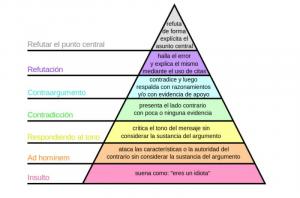Family Figure Matching Test: what it is and how to use it
Impulsivity is a characteristic present in various disorders, such as Attention Deficit Hyperactivity Disorder (ADHD). In this article We will talk about the Matching Test of Family Figures, a test to assess the reflexivity-impulsivity cognitive style in children and adolescents.
Kagan was the one who started talking about the reflexivity-impulsivity style in 1965. The test is based on the errors made by the subject and the response latency (time it takes to respond). We are going to know all its details and what it is used for.
- Related article: "Types of psychological tests: their functions and characteristics"
Family Figure Matching Test: Features
The Matching Familiar Figures Test or MFFT (Matching Familiar Figures Test) was developed by E.D. Cairns, and J. Cammock, although Kagan was the first to speak in 1965 of the reflexive-impulsive cognitive style. the mfft evaluate this style in children and adolescents.
The reflective-impulsive style is a continuum with two opposite poles at its ends:
reflection and impulsiveness. Between the two poles, the number of errors made by the subject will oscillate (ranging from imprecise to exact) as well as response latencies (from fast to slow).What does the test consist of?
The Family Figure Matching Test is a perceptual matching test. It consists of 12 items or essays. Each one is characterized by the simultaneous presence of a model drawing familiar to the child (for example, glasses, bear,...) and six different options for it.
The comparison stimuli differ from each other and from the model only in small details. Only one option is equal to the model. The subject must choose the one that is identical to the one in the drawing (You have six opportunities for each item). In case of error, the correct answer is indicated to the subject and the next item is passed.
- You may be interested in: "How to control impulsivity? 8 tips that help"
What is recorded?
During the administration of the test, the average response latency time and the precision of the responses (number of errors made) are recorded. So, a pattern of short response latency, along with a high error rate, is indicative of impulsiveness.
Thus, the variables that serve to operationalize the reflexivity-impulsivity style are the ones mentioned: the number of errors and the response latency in tasks with uncertainty.
Technical characteristics
The scope of the test is children from 6 to 12 years old. It is of individual application, with a duration of between 15 and 20 minutes.. It is measured in samples differentiated by sex and age. The material to be used is a notebook with the elements, a note sheet, a pencil and a timer.
There are authors who question the reliability and the lack of appropriate norms for adolescents. In addition to the original form, there is a longer one, with 20 items (MFFT 20), also developed by Cairns and Cammock.
Reflexive-impulsive style
As we have seen, the Family Figure Matching Test is designed to assess this cognitive style, defined by Kagan in the 1960s.
According to Kagan, this style refers to the characteristic way in which a child deals with tasks defined by uncertainty, that is, by the presence of several answer alternatives among which one is the correct one. Let's see what each pole of this style consists of:
1. thoughtful style
The person with a reflective style, spend more time answering and make fewer mistakes.
2. impulsive style
The impulsive style is characterized by low response latency (they take a short time to respond) and a high number of errors.
Types of subjects
On the other hand, according to Servera (1992), a third of the subjects that make up the sample used in reflexivity-impulsivity investigations, is made up of two types of subjects (who also form poles opposites):
1. efficient subjects
They are subjects who spend little time on the task and who make few mistakes.
2. inefficient
They spend a lot of time answering And yet they make a lot of mistakes.
Areas he explores
In addition to the cognitive styles discussed at a general level, at a more specific level the Family Figures Matching Test explores analysis of visual patterns and the subject's attention to detail, in addition to the inhibition of impulsive responses.
Bibliographic references:
- Soprano, a. (2003). Evaluation of executive functions in the child. Journal of Neurology, 37(1), 44-50.
- Cairns, E. and Cammock, J. (2005). Known Figures Matching Test Manual-20. Publications of Applied Psychology. TEA Editions: Madrid

